








Insecticides are a great way to keep your vegetable garden healthy and free of harmful insects. But with so many different types available, which one should you choose? In this blog post, we'll discuss the best insecticide for vegetable gardens and give you some tips on how to use it safely and effectively. Keep reading to learn more!









If you're growing broccoli in your garden, you'll want to know when to harvest it. The timing is important, as picking too early or too late can affect the taste and quality of the broccoli. Here's a guide to help you determine when your broccoli is ready to be picked.

These are the best houseplants for beginners! They're easy to grow, and they can survive just about anything—even if you forget to water them.
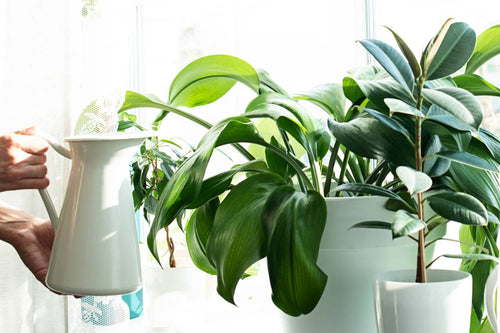




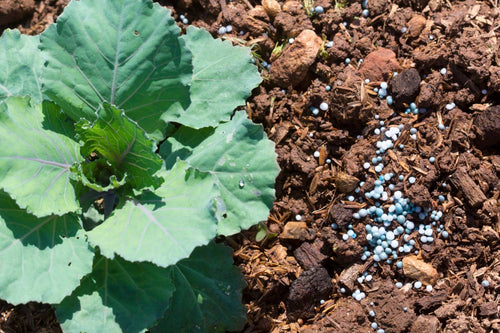



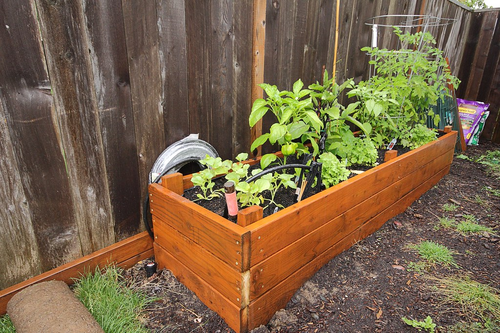
Raised beds and garden boxes are a favorite among gardeners and for good reason. They offer an inexpensive means to improve the productivity of your backyard, especially if you live in an area with low soil fertility.

Plants require proper exposure to sunlight for growth, development, flowering, reproduction, survival, and production. While it is impossible to grow favorite plants and vegetables all year round due to fluctuating environmental conditions.






Why Do Plants Need Fertilizer?
Pretty much like humans, plants require nutrients for proper growth and health. They take nitrogen (N), phosphorus (P), and potassium (K) in the highest quantities. These three nutrients are called macronutrients.
Other than the macronutrients, plants also take in several micronutrients. Though micronutrients are just as important to plant growth as macronutrients, they are required in much smaller quantities. Boron (B), Zinc (Zn), Manganese (Mn), and Iron (Fe) are some important micronutrients. There are others too.

Why do plants need vitamins and minerals?
Plants require various vitamins and minerals as well as energy derived from sunlight to conduct basic functions. This includes respiration, photosynthesis, cell development, enzyme and hormone production, water, and nutrient absorption/distribution, as well as other things.
Plants also require vitamins and minerals in order to grow. Even with access to sunshine, plants will not thrive unless they are supplied with vitamins and minerals.
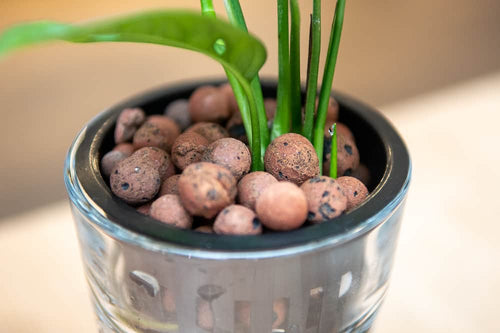
LECA helps you provide the correct amount of water for your plants. The plant's roots will readily absorb the water from the clay balls. The LECA quickly absorbs water and starts to expand.
Each ball holds the water for an extended time, slowly releasing it over time as the plant requires. You don’t have to worry about the plant quickly drying out or becoming overly water-logged when you use clay pellets.
![How to Make The Best Hydroponic Setups [2022]](http://humboldtssecretsupplies.com/cdn/shop/articles/2554465655_987c7f5e56_b_500X.jpg?v=1643853125)
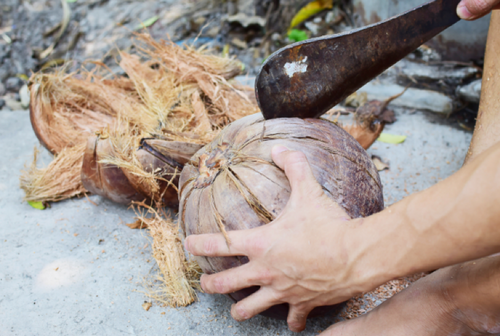
Coconut coir has taken over the gardening world by storm. But the question is, what makes it so great? In this definitive guide, that is the question we will address, let’s dive in.


Below are a few common hydroponic problems:
Hydroponic System Leaks
Even a new system can develop a leak. The leak might occur in the joints or valves. Also, if the hydroponic system becomes blocked from a root mass, then the water will back up and overflow. Perform checks regularly to ensure that roots are not clogging the drains or outlets.
If you design your own hydroponic system, then you’ll need to ensure that the reservoir is large enough to hold the water and nutrient solution or it could easily overflow if a power cut or pump failure causes a backup.


Below are just a few tips on hydroponic gardening:
- Keep your hydroponic water clean and make sure you are using adequate nutrients.
- Grow your plants indoors near a south-facing window. Ensure that the plants receive at least six hours of sunlight per day. If you do not have a window that provides sufficient sunlight, then consider using a grow lamp.
- Check the water pH. Ideally, it should hover around 5.8 to 6.2.

Introduction
Growing plants is one of the healthiest, satisfying, and rewarding hobbies a person could have. Connecting with nature, spending hours in your garden weeding, watering, raking, harvesting, or just looking at the spring blooms is a fulfilling experience only gardeners can relate to. Outdoor gardening isn’t the only way to connect with plants. Gardening is a multi-faceted area, encompassing indoor gardening and hydroponics among others.

The hydroponic wick system is remarkably basic and simple. In fact, the system has been used for thousands of years to cultivate plants.
With the wick system, nutrients and water are transported directly to the plant’s root system using a simple wick such as a piece of felt or rope. You suspend the plant’s agave the grow medium. Under the grow medium is a water reservoir filled with nutrients. One end of the wick is placed in the reservoir and the other within the growing media. The wick effectively transports water and nutrients slowly to the plant’s roots via a natural wicking system.
Known as ‘passive hydroponics,’ a wicking system requires no expensive air or water pumps. It is low cost and easy to maintain.

Hydroponics uses approximately 99 percent less water than traditional farming practices. The water and nutrients are delivered directly to the plant’s root systems and then recycled, unlike soil gardening where the water disappears due to runoff, evaporation. Hydroponics is an effective option in areas experiencing severe drought.

One of the best things about hydroponic gardening is that it requires truly little space. You can even create a tiny hydroponic garden in your kitchen for fresh herbs and tasty veggies when you need them the most.
The main reason why hydroponics requires less space is that the roots do not need to spread out through the soil in search of nutrients and moisture.
Instead, everything the plant needs for growth is delivered directly to the roots either in a constant flow or intermittently. The plant’s roots assume less space so you can garden in a smaller area.
When you combine hydroponics with vertical stacking methods, the area needed for cultivation is reduced even further. You can easily combine hydroponics with vertical farming technologies which can use 99 percent less land than standard farming.

Farming hydroponically uses water and liquid nutrients to meet the plant’s needs instead of soil. Basically, it does not matter if plants are grown in water or soil, as long as they receive the nutrients they need.
With hydroponics, a plant’s roots are exposed to water and nutrients either via full submersion or partial submersion. In some situations, the moisture mixture is sprayed directly on the plant’s roots at timed intervals.
Plants grown hydroponically are grown indoors, usually under grow lights. Vertical farms, which are wonderfully space-saving, are extremely popular for hydroponics.

Deep water culture is affordable and can even be built as an easy and rewarding DIY project. You simply need a container that holds water such as a plastic storage bin or five-gallon bucket.
Think about what you plan on growing when picking the container size. A tomato plant grown hydroponically can be grown in a large five-gallon bucket but if you want to grow several heads of lettuce then you’ll need a wider container to accommodate the plant.
Fill the container with water and nutrients.

How does a hydroponic system work?
Hydroponic systems are completely self-contained and remarkably simple. You can enjoy a tabletop hydroponic garden in your kitchen or opt to undertake a huge commercial hydroponic greenhouse project. Either way, all hydroponic systems share the same basics:

You’ll want to pick a planting location outdoors that is in full sun. The tree prefers moderately moist and porous sandy soil. When planting add peat moss to the soil to help improve its porosity and increase acidity, if needed. Keep the soil moist but not overly waterlogged until the plant establishes itself.
Light
As mentioned, the Norfolk pine prefers full sun, but it can withstand dimmer conditions. If you live in a location that suffers from cold winters, then you can keep the Norfolk indoors in a sunny location and then move the potted plant outdoors during the summer months.

Many people mistakenly believe that poinsettias are only available in red but the plants actually boast a great deal of color bracket variation. The brackets can range from pink to white, orange, or green, with red being the most common hue.
Growing Poinsettias
One of the things that make poinsettias so appealing is that they are remarkably easy to grow as an indoor houseplant.

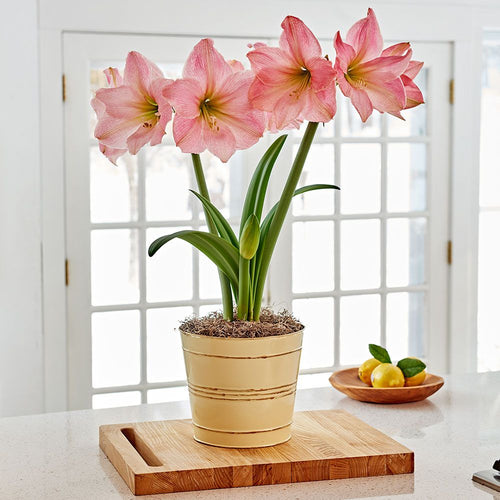




Tulips, crocus, daffodils, scilla, snowdrops, hyacinths, and grape hyacinths are just a few bulbs that you should plant in the autumn for spring flowers. They are easy to grow and ideal for beginners.
Planting fall bulbs is a necessity because the bulbs require a cooling period before they bloom in the spring. The wintry weather sparks a unique biochemical reaction in the bulbs that causes them to flower. It is especially important to plant fall bulbs before the ground freezes.

If you are lucky enough to live in USDA plant hardiness zone eight, then October is not the end of gardening opportunities but just the beginning. It’s time to consider planting a bevy of veggies for a robust winter harvest. If you have a cold frame, prepare the area for the new seedlings or seeds.
Known as ‘cold season’ vegetables, the following plants thrive even if the temperature dips to 10-15 degrees F. (-12/-9 C). The cooler temperatures help contribute to the flavor and growth because the heat and humidity of summer have waned.

Why is Fall a Bad Time to Prune?
When you prune a tree or shrub, the fresh wounds send a message to the plant to stimulate new growth. However, in the fall you want trees to go dormant and not develop new growth. New growth on a tree or shrub is delicate and highly susceptible to freezing. The first frost of winter will kill the new growth and traumatize the plant so severely that it might die.
Any time you prune on a worm day, sap rises upward so help heal the pruning wound. If the temperature drops to freezing, then the sap will freeze and damage the cells of the plant severe.

Worms naturally break down organic materials and return them to the oil. However, you can have a worm bin in your backyard, patio, or kitchen to regularly harvest the compost. The worm bin mimics the natural environment. You can purchase vermiculture bins online and from a variety of garden supply storms. The bins come in various sizes and shapes.
A five-to-10-gallon worm box is ideal for most households. The box is devices so that it is rather shallow because the worms prefer dwelling in the top layers (only about six inches deep). Worm bins are made from glass, plastic, or wood. Some people even fashion worm boxes from old aquariums or plastic containers instead of purchasing a commercial worm bin.

Autumn is the time of year when color comes alive. The trees and shrubs start to boast brilliant hues of burgundy, orange, yellow, and rust. To complement the changing season, you’ll want to add your own splashes of color to the landscape.
Consider planting the following flowers to spruce up your landscape and provide seasonal cheer:
- Black-Eyed Susan’s
- Aster
- Kale
- Cabbages
- Mums
- Pansies
- Violas

Planting in the Fall
Yes, you can still plant new plants in the garden during the fall. It’s a great time to buy because most garden centers offer cheaper prices to move their garden stock before winter. However, you’ll need to choose wisely when picking plants. Consider your area’s winters. If you live in a place with harsh weather, then you’ll want to pick hardy varieties such as Oriental poppies or peonies which will withstand sudden temperature swings even if they are not fully established in the garden when the cold strikes.
Fall is a great time to plant evergreen, and deciduous trees and shrubs. Japanese maples, cut leaf weepers, weeping cherries, hardy boxwood, and Sargent crabapples are all ideal choices for areas that suffer cold winters. You can even plant birds’ nest spruce or Hinoki cypress in containers for the patio.

Tomatoes have the reputation of being heavy feeders, which means they enjoy having access to ample nutrients to thrive.
When you first plant young tomato transplants into the soil, give them a chance to adjust before you start a fertilizer routine. Wait for three or four weeks before the first application of the fertilizer. For optimum success pick a liquid nutrient solution to meet the plant foliar and root needs. Follow the directions on the nutrient’s label for application instructions.

Flower Nutrient Basics: A Juggling Act
Plants require the correct combination of nutrients and minerals to bloom. In some regions, your soil might have almost all of what your plants need but lack just one or two elements to create truly outstanding bloom success.
Some plants might achieve ample green vegetation but never bloom because there is too much nitrogen in the soil. The high amount impedes the plant’s ability to make flower buds. Yes, nitrogen is necessary for your plant’s chlorophyll production, but your plant also needs potassium and phosphorus to balance things out and create bud and flower formation. It all becomes a juggling act.

Hydroponics Grow Systems for Areas of Drought
With much of the globe facing water shortages and unprecedented heat waves, meeting the irrigation needs of food crops has become difficult in many regions. A stressed plant will simply not produce a bountiful harvest because it wastes its energy on other processes.
A hydroponic system provides ample water and nutrients to your plants so they can flourish even under stressful conditions such as low humidity or excessive temperatures.

Preparing for Autumn
August is the perfect month to start preparing for the fall.
You should:
- Tidy up the garden so that the fall clean-up is quicker and easier.
- Take the time to check your garden for worms and borers in plants such as broccoli, cabbages, and cauliflower.
- Treat for grumps in your lawn to prevent future problems.
- Prune away diseased, dying, and dead stems on perennials, trees, and shrubs - especially on azaleas and rhododendrons
- Remove any dead or yellow leaves
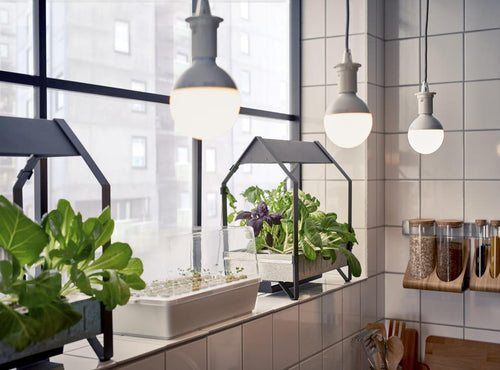
Growing with sustainable hydroponics is a great way to conserve water and you can even garden hydroponically indoors!
Garden Hydroponically to Conserve Water
In areas of severe drought, you can no longer hope for rainfall to water your garden. However, hydroponic gardening is a great way to cultivate a garden (often indoors or in limited space areas) while using truly little water.

One of the leading causes of houseplant death is overwatering. The wet, soggy soil leads to rot and fungal infections. However, a houseplant’s roots can thrive when fully submerged in water, so you do not have to worry about killing your plants with too much water as you do when they are growing in soil.
Another perk about growing houseplants hydroponically is that they truly do grow faster and look amazing. Most develop outstanding foliage which looks very eye-catching in your home.

One of the best ways you can attract birds to the garden is to grow the plants they love. Here are a few top choices:
- Purple Coneflowers (Echinacea spp.): Coneflowers produce beautiful blooms that attract birds, butterflies and other pollinators. The plant creates seeds that are favored by a variety of birds such as goldfinches.
- Sunflowers (Helianthus spp.): Sunflowers are cheerful and robust. They are adored by birds who use the fat-rich needs as a valued food source. Best of all, they are easy to grow.
- Milkweed (Asclepias spp.):Milkweed is the food of choice for monarch butterfly caterpillars. The plant attracts insects which serve as a valuable food source for birds too. Many birds also use the downy part of the seeds as nest lining.
- Trumpet honeysuckle (Lonicera sempervirens):This vining honeysuckle produces an abundance of red tubular flowers that hummingbirds adore. The vines also attract Purple Finches, Orioles and Thrushes.
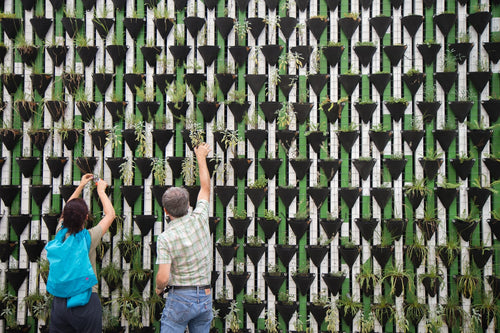
Benefits of Vertical Gardening
Vertical gardening looks fantastic. It creates a wall of lush greenery. In addition, you have ample access to the plants for cultivation care. However, there are other benefits to vertical gardening. Let’s look at why you should consider vertical gardening:
Saves Space
Yes, vertical gardening saves space. You can grow vining plants with vertical supports instead of letting the vines sprawl across the ground.

Best Time to Sow Fall Crops
When determining the best time to sow fall crops, remember that you'll want to add three weeks to the length of time it takes the plant to reach maturity, which is always printed on the seed pack label. Most seed maturity dates are figured based on spring and summer sunlight. However, as autumn approaches, the days grow shorter, so it will take longer for the seedlings to grow without as much sunlight. However, cool-season plants do grow during the night, even when the temperature turns chilly.
Plant cabbage and broccoli seedlings at least eight weeks before the first projected fall frost. Keep their roots moist during the late summer heat to encourage good root growth before fall and the inevitable growth slow down.

Shading devices are another option to cool plants in a summertime heatwave. You can run snow fencing, or you can use pre-assembled sections of picket fence along the south or west side of plants to provide them with shade during the height of the afternoon.
The use of lightweight cloth to create shade covers also works well to keep plants cool. You can buy shade material at most garden supply retailers or online.
Use old sheets to make our garden shade covers. Position them so they are several inches above the plants and can successfully start retaining heat. The old screen also makes a great shade cover.


Who doesn’t enjoy a crisp green salad or a few leaves of lettuce on their sandwich? The leafy green is bursting with flavor and highly nutritious. In addition, it is a straightforward plant to grow hydroponically because it has a shallow root system and requires no support to guide the plant’s growth. Lettuce grows well in any hydroponic system, and all you have to do is regularly change the nutrient solution to promote robust growth.
Typically it takes only 30 days from seed to harvest. Maintain a pH of 6.0 to 7.0 for best growth results. You’ll want to stagger the plants, so you have a continuous supply of the leafy greens. Try Bibb, Romaine, Boston, Buttercrunch, and Iceberg.

Chores are an enjoyable part of gardening because your hard work clearly pays off. May is the perfect time to buckle down and take care of much needed garden tasks.
- Start Weeding: The April showers do more than bring May flowers. They also bring weeds. If you keep up on weeding in May then you won't’ be overran in June. It's easier to battle weeds in the early months when they are tiny then when they start to establish themselves with a deep root system.



Make your yard a mecca for the fluttering insects during all stages of life, from caterpillar to butterfly. Butterflies have basic needs such as food, water, shelter, and shade.
Choosing a Location
Pick a partially sunny location in your yard. Ideally, it should have some shelter from the wind. A spot with a few trees and shrubs is ideal because butterflies roost at night so they like a secluded spot where they feel safe. Also, having ample foliage in the butterfly garden provides much-needed shade during the sweltering hot afternoons.

Top Purple Perennials for the Garden
With the arrival of spring, most gardeners are chomping at the bit in anticipation of planting new and interesting perennials in the garden. The following five purple flowers are an ideal addition to any garden. They are easy to care for and exceptionally hardy in a wide range of USDA plant hardiness zones.
-
Alliums
A member of the onion family the allium might not smell great, but it makes up for the odor problem by producing outstanding purple globe-shaped flowers. They grow well in USDA zones 3 to 4 and require minimal care once established. A bed of alliums can last for years before they need dividing.

Carrying Out Spring Inspections
It’s time to carry out a spring inspection of the yard. Grab a notepad and pencil so you can make notations.
- Inspect garden plants for damage from snow, cold, or ice.
- Note all the beds that need cleaned out and if they require additional mulch.
- Peruse over the garden’s hardscaping such as sheds, trellises, walkways, fences, and more to make sure that nothing has cracked, shifted, or fallen into disarray.
- Check for evidence of animal burrows which can wreak havoc on your garden.
- Look over any plants, shrubs, or trees that will require spring pruning.

Warm Weather Bulbs
Have you ordered your warm weather bulbs yet? Get your online orders in because the most popular types sell out quickly. Many people start their warm weather bulbs indoors (especially in areas that suffer long cold springs). Sprout the bulbs in nursery pots in a sunny window or sunroom.
Compost
Are you ready with compost? One of the first spring garden chores you’ll need to complete is to add two to three inches of mulch around your plants. The compost helps keep the roots warm during spring temperature fluctuations, helps the soil hold moisture, and prevents unwanted weed growth.





Thorn-covered raspberry bushes adore the cold weather. The shrubs will grow on the side of a mountain as far north as the Canadian border. The hardiest varieties produce red or yellow berries. Avoid planning thornless raspberries shrubs in areas that suffer extreme weather because they are not as cold hardy
Choose a planting location in full sunlight. Raspberry bushes prefer well-draining soil that is somewhat sandy. The planting location should provide some protection from extreme winds. Often a slope is the best area to plant the bushes because they will have some protection.

Flowers Are an Allergy Sufferers Worst Nightmare
Flowers look amazing and they smell wonderful, but they also carry pollen which can trigger an allergic avalanche of physical symptoms. Modern, hybridized plants are less likely to contain exceedingly high levels of pollen, but most gardens contain the old-fashioned plant varieties that have flourished for generations.
Pollen in Big and Small Flowers
Luckily, the most outstanding flowers do not always have the most pollen. In fact, Mother Nature designed brilliant blooms to attract honeybees and other pollinators to evenly disperse the plant’s pollen because the blooms contain very heavy pollen which is not transferred easily via the wind. The worst flowers for allergies are usually very nondescript and tiny. They have dust-like pollen that is easily dispersed via the wind.

Understanding Microgreens and Sprouts
Nowadays, it seems like everyone banters the words microgreens and sprouts interchangeably but they are really two unique stages. Sprouts are germinated seeds. The small plant bursts out of the seed, pushing the seed shell up and out of the soil. The shell usually hangs precariously on the top of the sprout. Currently, you harvest the sprout, and you enjoy the tender plant and the seed. The combination of crunchy goodness is loaded with nutrition.
A microgreen is the next stage of the plant’s life right after it sheds the seed shell. Most people think of the microgreen phase as the toddler stage of a plant’s life and the sprout phase as a baby stage.

The Importance of Composting
Composting is an important part of gardening. A rich compost combined with a nutrient-rich fertilizer such as one of Humboldts products is a great way to successfully grow a thriving garden. For centuries backyard compost piles have been an indispensable tool for gardeners, but nowadays you have options that provide greater efficiency and ease to create black gold compost for the garden. In this article, we will explore the differences between composters and tumblers.

Types of Bamboo
The diversity of bamboo is truly mind-boggling. Bamboo grows on five continents and there are 1718 species that are divided into 128 genera. At your local nursery, you will encounter around 100 species. Many can reach staggering heights of 30 feet and others will barely stand five feet tall when fully grown. You will see that bamboo is divided into two categories: clumping and running. Clumping bamboo grows in an easy-to-maintain clump and is not invasive. Running bamboo travels everywhere and can quickly overtake a landscape if not maintained. However, running bamboo is ideal for creating a privacy hedge or fence.

Air plants are easy to maintain but they are not completely ‘care-free’. Like any plant, they require light, air circulation, water, and nutrients. They are incredibly happy with only minimal watering and nutrients though. You can easily keep these plants alive by using a hydroponic nutrient solution and water. Simply lightly mist the plant daily with the formula and it will thrive. Some people take the air plants and submerge them in a water and nutrient bath once a week to abstain from the daily misting.
All air plants adore light so make sure you put them in an area of high light that replicates where they would be growing outdoors on a tree. Many people like to pair the Tillandsia with orchids because they both require similar care and light and will easily complement each other


During the dark and gloomy winter months, you might think that the growth of your plants will slow but plants that are grown using hydroponic systems grow up to 50 percent faster than those cultivated in soil. With no environmentally induced stress factors like weather and pests, optimum nutrients such as Humboldts solutions, and ample water, the plants grow quickly and produce well. You’ll be amazed at how well leafy greens and thirsty fruits like tomatoes do in a hydroponic environment.






